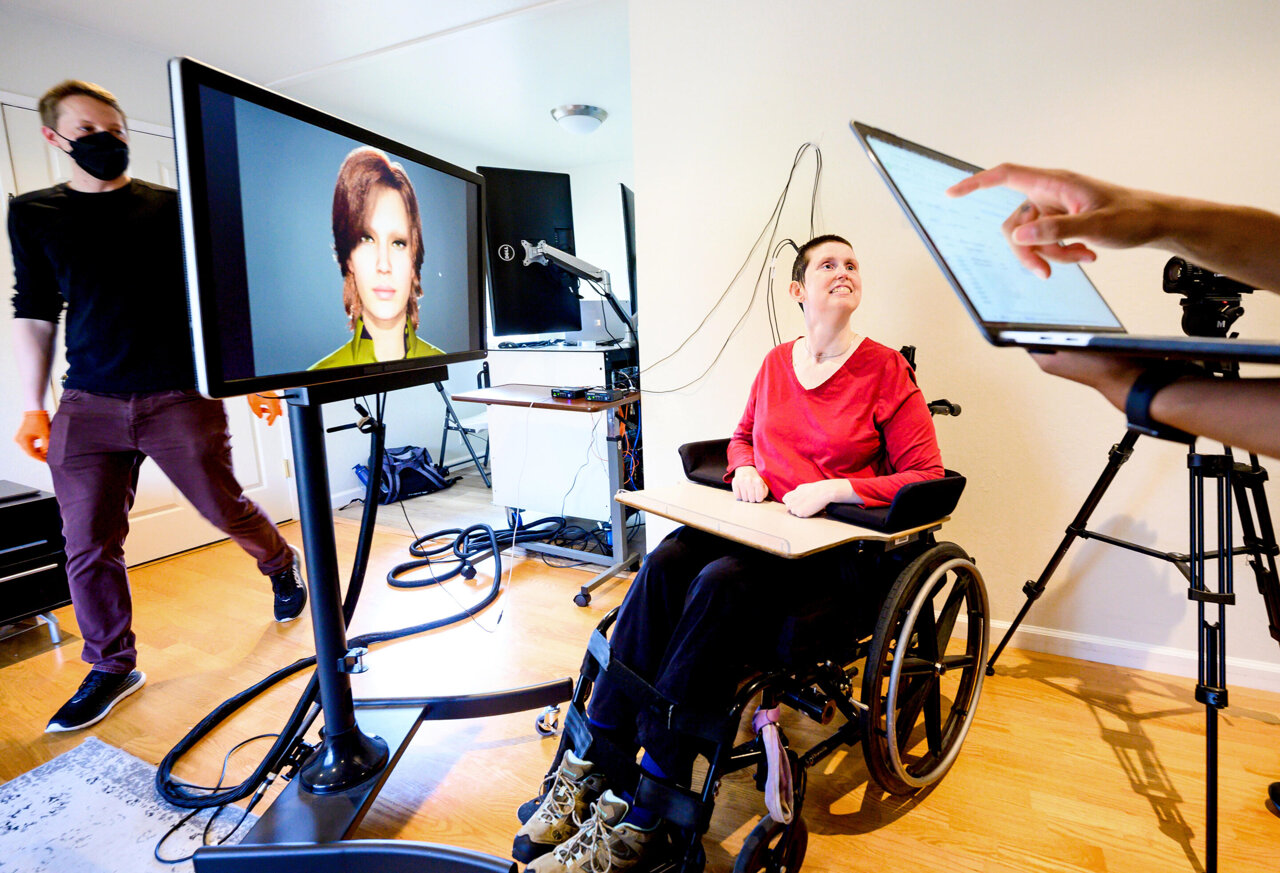Main topic: Unbabel's development of a brain-to-computer interface called Halo.
Key points:
1. Unbabel, a language translation startup, has been exploring brain-to-computer interfaces as a way to improve communication.
2. They have developed Halo, a device that uses an EMG system to measure muscle response and generate personalized language through generative AI.
3. The potential applications of Halo include assisting patients with ALS and other communication challenges, with the goal of reaching superhuman communication capabilities.
Hint on Elon Musk: Unbabel's approach to brain-computer interfaces is non-invasive and focuses on enhancing communication, in contrast to Elon Musk's Neuralink, which is exploring invasive brain-computer interface devices.
A paralyzed woman's brain activity is being translated into words spoken by an avatar, allowing her to communicate after losing her ability to speak due to a stroke.
Summary: Scientists have developed a groundbreaking brain-computer interface (BCI) that enables a paralyzed woman to communicate through a digital avatar, synthesizing speech and facial expressions directly from brain signals at a remarkable rate of nearly 80 words per minute, potentially restoring comprehensive communication for paralyzed individuals.
A breakthrough brain implant and digital avatar have enabled a stroke survivor, who has been unable to speak for 18 years, to communicate for the first time through facial expressions and synthesized speech decoded from her brain signals.
A woman who lost her ability to speak after a stroke has regained her voice through the use of artificial intelligence, with researchers implanting electrode implants into her brain to allow for natural communication.
Summary: This week in neuroscience, groundbreaking discoveries include decoding complex life oscillations, enhancing memory with visual symbols, neural mapping of C. elegans worm, potential solutions for age-related hearing loss, and a revolutionary brain-computer interface that restores communication for paralyzed individuals.
Researchers from Radboud University and the UMC Utrecht have successfully transformed brain signals into audible speech using brain implants and artificial intelligence, achieving an accuracy of 92-100% in predicting spoken words, with the goal of giving a voice back to paralyzed individuals in a locked-in state.
Main topic: The use of brain-computer interface (BCI) technology for medical purposes
Key points:
1. BCI technology is being developed to restore agency and autonomy for patients with conditions such as ALS, spinal cord paralysis, and stroke.
2. Synchron's Stentrode device offers a minimally invasive implantation method with improved signal quality.
3. Challenges include ensuring the long-term safety and effectiveness of BCI devices and the need for regulatory bodies to address ethical concerns.
Researchers from the University of California San Francisco have developed a brain implant and digital avatar system that allows people with locked-in syndrome to both communicate and show facial expressions, providing new options for those with the neurological disorder.
A new study demonstrates how a brain-computer interface uses artificial intelligence deep learning to accurately translate brain activity to speech.
A stroke survivor who had been left paralyzed and unable to speak for nearly 20 years has regained her ability to communicate with the help of an AI-driven brain implant that decodes brain signals and converts them into computerized speech.
Elon Musk's Neuralink is recruiting candidates for its first human clinical trials to test their brain chips on individuals with quadriplegia due to spinal cord injuries or ALS, aiming to grant them the ability to control a computer cursor or keyboard using their thoughts alone.
